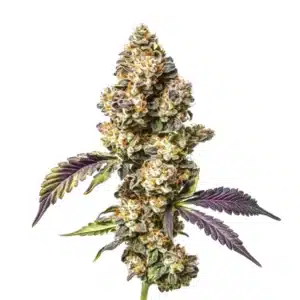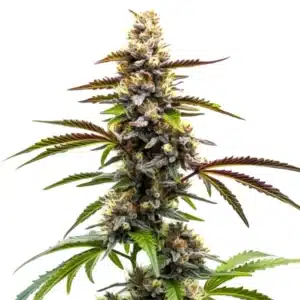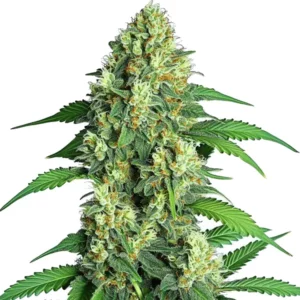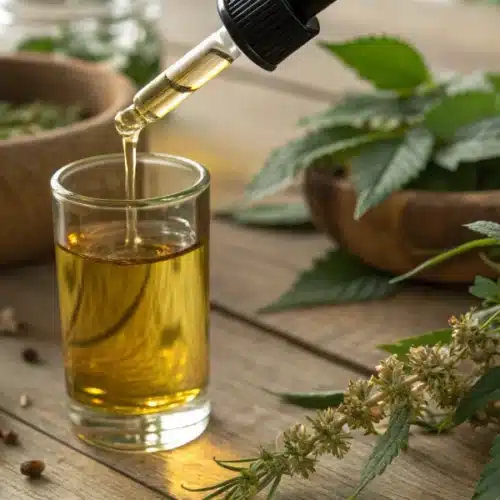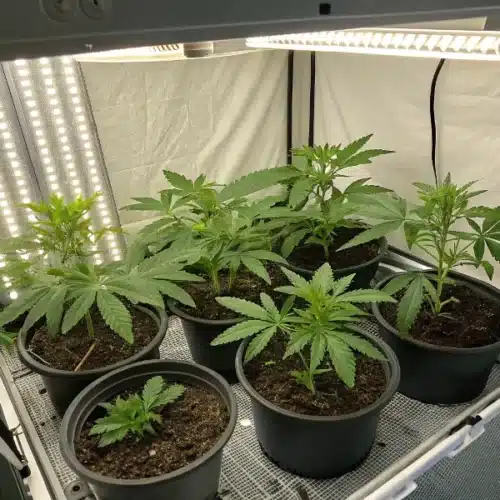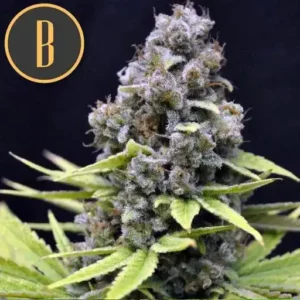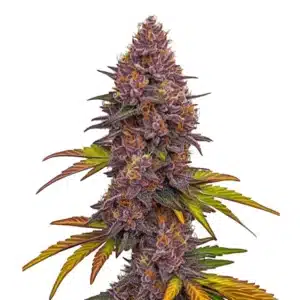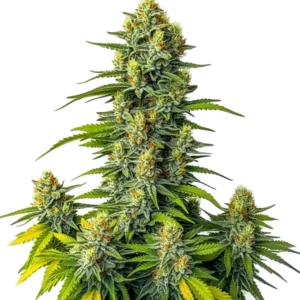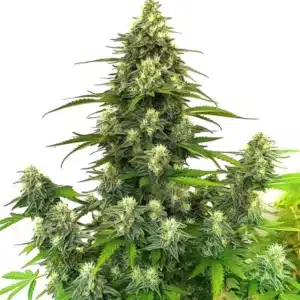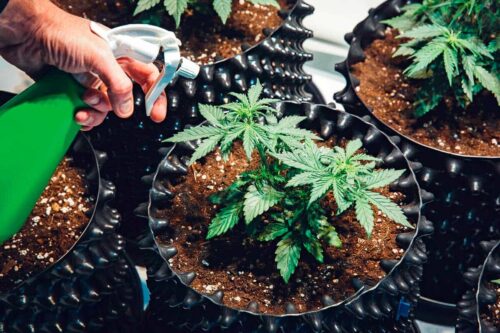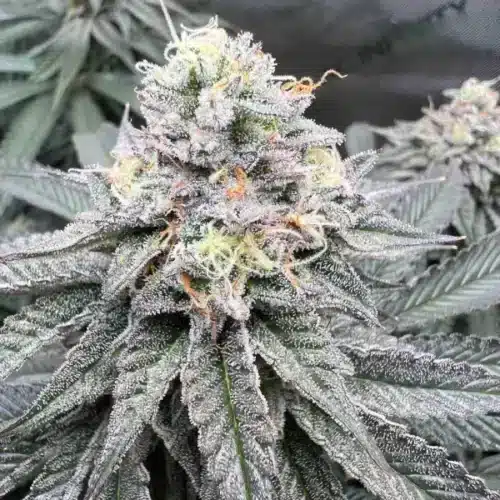Growing autoflowers presents unique challenges, especially when you’re six weeks into the process and your plants aren’t flowering as expected… By week six, your autoflower should exhibit clear signs of flowering, and the buds should be forming and swelling, signaling a healthy progression towards harvest. By week six, your 6 week old autoflower should display clear signs of flowering, including swelling buds and pistil development. If your autoflower week 6 shows no signs of flowering, consider checking for environmental stress or genetic factors. This detailed guide will help you navigate through the nuances of autoflower cultivation, ensuring that your plants thrive and produce bountiful yields.
How To Tell When Autoflower Is Flowering
The transition to flowering is a critical stage in the life of an autoflower plant. Unlike photoperiod strains, autoflowers begin to flower based on age rather than changes in the light cycle. Typically, you can expect your autoflower to start flowering around the third or fourth week after germination.
Signs of Flowering:
- Pistils Development: The most noticeable sign of flowering is the appearance of white hairs, known as pistils, emerging from the nodes where the leaves and stems intersect. This indicates that the plant has transitioned from the vegetative to the flowering stage.
- Stretch Phase: Autoflowers often undergo a stretch phase when they start flowering, growing taller as they direct their energy towards bud production. If you observe an increase in height without pistil development, this might indicate environmental stress or nutrient deficiencies.
Optimal Conditions:
- Lighting: Ensure your autoflowers receive 18-24 hours of light daily to promote robust flowering. A full-spectrum LED light is ideal, as it mimics natural sunlight and supports both vegetative growth and flowering.
- Temperature & Humidity: Maintaining a temperature range of 68-77°F (20-25°C) and humidity levels around 40-50% is crucial during flowering. This environment helps prevent mold and supports healthy bud development.
By week six, your autoflower should exhibit clear signs of flowering, and the buds should be forming and swelling, signaling a healthy progression towards harvest.
Promos & Deals
Autos 6 Weeks Old No Flowers
If you’ve reached the six-week mark with no signs of flowering, it’s important to identify the underlying issues promptly. Here are some common reasons and solutions:
Genetic Factors:
- Strain-Specific Variability: Not all autoflowers follow the same timeline. Sativa-dominant strains, for instance, may take longer to enter the flowering phase compared to Indica-dominant ones. Strains like Gorilla Glue Auto and Blue Dream Auto from Blimburn Seeds are known for their reliable flowering timelines, but others might require a bit more patience.
Environmental Stress:
- Light Spectrum: Ensure your grow lights provide the correct spectrum. Autoflowers need consistent, high-quality light to flower properly. If the light is too weak or not in the right spectrum, it can delay flowering.
- Temperature Fluctuations: Extreme temperatures can stress plants, leading to delays in flowering. Keep a stable environment to prevent stress.
Nutrient Imbalances:
- Nutrient Lockout: Overfeeding or incorrect pH levels can cause nutrient lockout, where plants are unable to absorb essential nutrients. This can prevent flowering. Regularly check your soil or hydroponic system’s pH and maintain it within the ideal range—6.0-7.0 for soil and 5.5-6.5 for hydroponics.
- Overfeeding: Autoflowers require a lighter nutrient schedule due to their shorter lifecycle. Excessive nutrients can cause toxicity and delay flowering.
Addressing these factors should help your plants transition into the flowering stage and ensure a successful harvest.
This Auto Has Been in Flower for Like 6 Weeks
After six weeks of flowering, your autoflowers should be in the final stages of bud development. This period is crucial for enhancing bud quality and preparing for harvest.
Bud Development:
- Swelling Buds: By this stage, your buds should be swelling and becoming denser. The pistils will likely start changing color from white to amber or orange, indicating maturity.
- Trichome Production: Trichomes, the tiny resin glands covering the buds, should be in full production. These trichomes contain the cannabinoids and terpenes that determine the potency and flavor of your cannabis.
Harvest Readiness:
- Trichome Color: The color of trichomes is a reliable indicator of when to harvest. Clear trichomes indicate the plant isn’t ready, milky trichomes suggest peak potency, and amber trichomes signify a more sedative effect. Most growers aim to harvest when most trichomes are milky with a few turning amber.
Nutrient Management:
- Flushing: If you haven’t started already, now is the time to begin flushing your plants. Flushing involves watering your plants with plain water (no nutrients) to remove any residual nutrients in the soil, ensuring a smoother taste and better quality smoke.
Environmental Control:
- Humidity & Temperature: As the buds become denser, they become more susceptible to mold. Keep humidity levels low (around 40-50%) and maintain a stable temperature to protect your crop.
By closely monitoring your plants during this stage, you’ll be able to harvest at the perfect time, maximizing both yield and potency.
Autoflower Germination

Successful autoflower cultivation begins with proper germination. Given their short lifecycle, it’s crucial to start strong.
Germination Methods:
- Paper Towel Method: Place seeds between moist paper towels, then place them in a dark, warm location. Within 1-3 days, the seeds should sprout, showing a small taproot.
- Direct Sowing: Planting seeds directly into the final grow medium can reduce transplant shock, a significant advantage for autoflowers. Ensure the soil is moist but not waterlogged.
- Water Glass Method: Soak seeds in water for 24-48 hours until they crack open, then transfer to a growing medium.
Optimal Conditions:
- Temperature & Humidity: Autoflower seeds germinate best at temperatures between 70-85°F (21-29°C) and high humidity levels. A stable environment promotes quick and healthy germination.
- Light Exposure: Once the seedlings emerge, they should receive 18-24 hours of light per day to encourage strong growth.
Starting your autoflowers under optimal conditions sets the stage for a successful grow, minimizing stress and maximizing yield potential.
Autoflower Grow

Cultivating autoflowers requires a nuanced approach, particularly because of their fixed lifecycle. Here’s how to optimize your grow for the best results:
Lighting:
- Consistent Light Schedule: Autoflowers thrive on a light schedule of 18-24 hours per day. Unlike photoperiod strains, they do not require a dark period to flower, making consistent light exposure crucial for optimal growth.
- LED Grow Lights: Full-spectrum LED lights are ideal, providing the necessary light intensity and spectrum for both vegetative and flowering stages. LEDs also generate less heat, reducing the risk of heat stress.
Nutrient Management:
- Light Feeding Schedule: Autoflowers have a shorter life cycle and thus require fewer nutrients than photoperiod strains. Start with a light nutrient regimen and increase as needed. Overfeeding can cause nutrient burn, stunting growth and reducing yield.
- Organic Nutrients: Many growers prefer organic nutrients, which are gentler on the plants and can enhance the flavor and aroma of the final product.
Training Techniques:
- Low-Stress Training (LST): LST involves gently bending and tying down branches to create an even canopy, allowing more light to reach lower bud sites. This can increase yield without stressing the plant. Avoid high-stress techniques like topping, as they can delay growth in autoflowers.
Environmental Control:
- Temperature & Humidity: Maintaining an optimal environment throughout the grow is crucial. Keep temperatures between 68-77°F (20-25°C) and humidity around 40-50% during flowering to prevent mold and other issues.
By following these guidelines, you can maximize both the yield and quality of your autoflower harvest, making the most of their rapid growth cycle.
How Long Do Autoflowers Flower?
The flowering timeline of autoflowers is one of their most attractive features, especially for growers seeking a quick turnaround.
Typical Flowering Duration:
- 5-7 Weeks: On average, autoflowers take 5-7 weeks to flower after the initial vegetative stage. This timeline can vary slightly depending on the strain and growing conditions.
- Strain Variability: Strains like Purple Lemonade Auto and Cafe Racer Auto from Blimburn Seeds may have different flowering durations. Sativa-dominant strains might extend towards the longer end of the spectrum, while Indica-dominant varieties usually finish faster.
Monitoring Flowering Progress:
- Bud Development: From week 3-4, your autoflowers should start showing signs of flowering, with noticeable bud formation by week 5. By week 6-7, the buds should be dense and covered in trichomes.
- Harvest Timing: The timing of harvest is crucial. Use a magnifying glass to inspect trichomes and determine the optimal harvest window, aiming for mostly milky trichomes with some turning amber.
Final Weeks:
- Flushing: In the last 1-2 weeks, flush your plants with plain water to remove any excess nutrients, ensuring a smooth smoke.
- Environmental Adjustments: As you approach harvest, keep a close eye on humidity levels to prevent mold, especially as the buds reach their maximum density.
The flowering timeline allows you to plan your grow effectively, ensuring you harvest your autoflowers at their peak potency and flavor.
Autoflower Stages by Week

Knowing the stages of autoflower growth week by week is crucial for successful cultivation. Each stage comes with its own set of requirements and challenges that must be addressed to ensure a healthy and productive grow.
Weeks 1-2: Seedling Stage
During the first two weeks, the focus is on root development and establishing a strong foundation. The seedlings are delicate at this stage and require consistent light, warmth, and moisture. Avoid overwatering and ensure that the plants have enough humidity to thrive.
Weeks 3-4: Vegetative Stage
By weeks 3-4, the plants will have entered the vegetative stage. This is when they focus on developing leaves and stems, preparing for the flowering stage. It’s important to provide enough nutrients to support this rapid growth, but be cautious not to overfeed. The plants will also start to show signs of pre-flowering as they prepare to transition.
Weeks 5-6: Early Flowering Stage
During weeks 5-6, the plants will be in the early flowering stage. This is when you’ll start to see the formation of buds and the appearance of pistils. Nutrient needs will shift towards bloom-focused formulas that support bud development. Light exposure is crucial at this stage, so make sure your plants are getting consistent, high-quality light.
Weeks 7-8: Mid to Late Flowering Stage
In weeks 7-8, the plants are focused entirely on bud development. The buds will swell and become more resinous, with trichome production in full swing. Monitor the plants closely for any signs of nutrient burn or deficiencies, and start considering when to begin the flushing process to ensure a clean and flavorful harvest.
Weeks 9-10: Harvest and Post-Harvest
By week 9-10, most autoflowers will be ready for harvest. Check the trichomes to determine the optimal harvest time. Once harvested, the plants will need to be dried and cured properly to preserve the cannabinoids and terpenes, ensuring a high-quality final product.
Top 10 Strains for Autoflower Cultivation
When it comes to choosing the best autoflower strains, Blimburn Seeds offers some of the top-performing varieties. Here’s a brief look at ten exceptional strains:
- Gorilla Glue Auto: Known for its potency and resin production, this strain delivers a powerful, long-lasting high. The buds are sticky and dense, with a strong aroma that blends earthy and pine notes. Gorilla Glue Auto is perfect for those seeking a heavy-hitting strain that is easy to grow.
- Blue Dream Auto: A balanced hybrid that offers uplifting effects and a sweet berry aroma, making it perfect for daytime use. Blue Dream Auto is known for its large yields and vigorous growth, making it a favorite among both novice and experienced growers.
- Purple Lemonade Auto: This strain is a vibrant choice with striking purple hues and a sweet, citrusy flavor. Purple Lemonade Auto is not only visually stunning but also provides a balanced, uplifting high that is perfect for social occasions.
- Cafe Racer Auto: A powerhouse strain that combines the best of both Sativa and Indica genetics. Cafe Racer Auto is known for its high THC content and energetic effects, making it an excellent choice for creative activities or socializing.
- Amnesia Haze Auto: Offers a potent cerebral high with citrusy, earthy flavors, making it a favorite among Sativa lovers. This strain is known for its long-lasting effects and can provide a significant boost in creativity and focus.
- White Widow Auto: Famous for its frosty buds and balanced effects, this strain is easy to grow and highly rewarding. White Widow Auto delivers a blend of euphoria and relaxation, making it ideal for both recreational and medicinal users.
- Fat Bastard Auto: A robust strain that produces large, dense buds with a strong, fruity aroma. Fat Bastard Auto is known for its high yields and powerful effects, making it a great choice for growers looking to maximize their harvest.
- Lemon Haze Auto: Delivers a zesty lemon flavor with uplifting and energizing effects, ideal for daytime use. Lemon Haze Auto is a vigorous grower that produces high yields of resinous buds, perfect for those who enjoy a citrusy twist in their cannabis.
- OG Kush Auto: This iconic strain offers a powerful, relaxing high with earthy, pine flavors. OG Kush Auto is a must-try for those who appreciate the classic Kush effects in a fast-growing, easy-to-manage autoflowering variety.
- Tangie Auto: Known for its strong citrus aroma and euphoric effects, this strain is a great choice for Sativa enthusiasts. Tangie Auto grows quickly and produces dense, aromatic buds that are perfect for both extraction and smoking.
Each of these strains has been selected for its unique characteristics, making them top choices for both novice and experienced growers alike.


